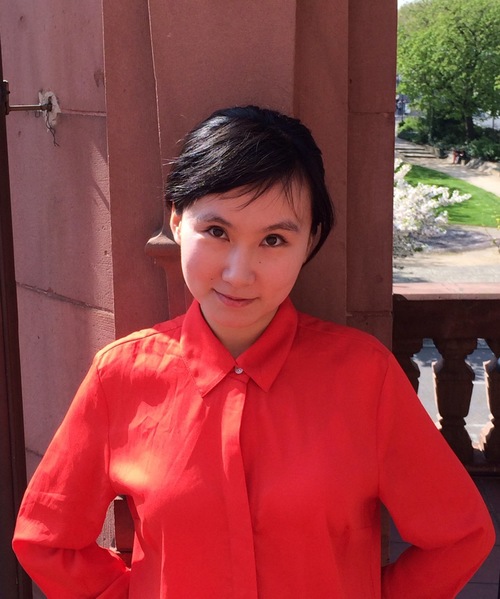MATA opens festival with a multiplicity of styles and directions
Todd Tarantino, executive director of MATA, opened its 2015 festival Tuesday night at the Kitchen with the claim that MATA was the leading new music event of its kind in the world. He may be right.
MATA (Music At The Anthology) is dedicated to presenting the music of new and emerging composers, and it receives submissions from all over the globe (over 1,000 for next year’s festival), draws musicians internationally and presents a wide range of ideas and styles.
That last quality is essential. Although five or so years ago, MATA seemed on the verge of becoming an ideological bastion of post-minimalism, the successive tenures of artistic directors Yotam Haber and now Du Yun has opened up the concerts to quality music of many styles. It has been twenty-five years since John Cage wrote, “We are all going in different directions,” and musical vitality depends on the steady expansion of multiple universes.
There were six compositions played Tuesday, all by composers under forty, representing four continents and different individual directions. The versatile, aptly named ensemble was the Curious Chamber Players from Sweden.
Carlos Guitiérrez Quiroga not only composed the opener, Jintili, but built the instruments—tiny, obsessive adaptations of the panpipes of his native Bolivia. For most of the work, four musicians produced whistle tones with these ridiculously small sets of pipes. The sound was barely audible, the players’ soto voce inhalations were louder, and the lontano quality meant the music elided with the sound of one’s own breathing. Jintili had the infiltrating psychoacoustic effect of hearing birdsong outside as one began waking from a morning dream. Quiroga is exploring both the social and spatial aspects of Bolivian folk music, but the concept came second to the mysterious and engrossing sound.
Tomi Räisänen’s Stheno also avoided normal pitches. The work is scored for two players, a guitarist (Frederick Munk Larsen) who plays an acoustic insttrument with bottle slide, and a recorder player (Dries Tack) whose instrument is unassembled, with the holes taped over. Tack blew into the pipes, tapped them together, both musicians stamped their feet in time and in cross-rhythms, and sang growly, wordless phrases. These elements and the emphasis on forceful rhythms put Stheno in the legacy of Harry Partch. At times the playing was interrupted by the audio of water running and dripping, superfluous against the humor and vivacity of the music.
Tarantino’s quintet …all words are already decided was heard in its world premiere, finishing the first half in an expressionist mood. Written for mixed quintet, Tarantino explores an obscure, but affecting, personal topic, and the music traveled from tense quarter-tone intervals, through a stormy piano solo, to a delicate and almost wistful consonance near the end. The final quarter-tone triad was a fascinating expression of ambivalence about tonal harmony. Conducted by Rei Munakata, who had a clear, firm hand all night, this was narrative music played with strength by the five musicians (flutist Hannah Törnell Wettermark, clarinetist Tack, pianist Anna Christensson, violinist Karin Hellqvist and cellist My Hellgren).
Tarantino’s was the loudest work of the concert; the second half was quiet again, starting with Malin Bang’s palinode. Along with the first two works, and Johan Svensson’s diamond dust that followed, palinode barely touched on standard pitches, which, when heard, appeared as an emergent property of the shifting timbres. In contrast to the exploratory avant-gardism of Helmut Lachenmann, heard last week, it was satisfying to hear how his concept, and originally that of Cage, has been so thoroughly incorporated into the language of the current generation of composers.
The sound of palinode was abrading and resiny, full of rasping strings and rustling metal—Hellqvist rubbed a metal bucket with a cleaning brush, Larsen scraped a block against a miniature swing. Bang described it as a representation of the constant reconstruction of Berlin, and the exact rhythms and patterns emulated a sense of mechanized order, but the sounds, which stimulated the back of the neck with both intrigue and unease, were satisfying as a pure exploration of nonverbal (and even unnatural) communication.
Svensson’s piece is a trio for piano, bass flute, and cello. Christensson played in the upper octave of the piano while holding a damper on the strings, and each musician played fast fingering patterns that did everything but articulate notes—except, it seemed, when the music gathered sufficient momentum to produce a pitch, like sun glinting off ice.
The last piece was Urban Inventory, a world premiere commissioned by MATA from Wang Lu. Wang has an attractive style, writing music that is well organized but which sounds improvised (scored for flute, clarinet, piano, violin and cello). Everything seems a little too short or a little too long, the instrumental lines a little too jumbled, but then everything comes together in elegant, sophisticated musical logic.
The music accompanied an audio track that mixes together sounds from a day in a park in China. The piece would work as well, or better, as pure music, without the audio context. Near the end, though, there is a poignant duet with a sugary pop song, before the spell is broken by the final sound, of a garbage truck.
The 2015 MATA Festival continues at the Kitchen through April 18. matafestival.org
